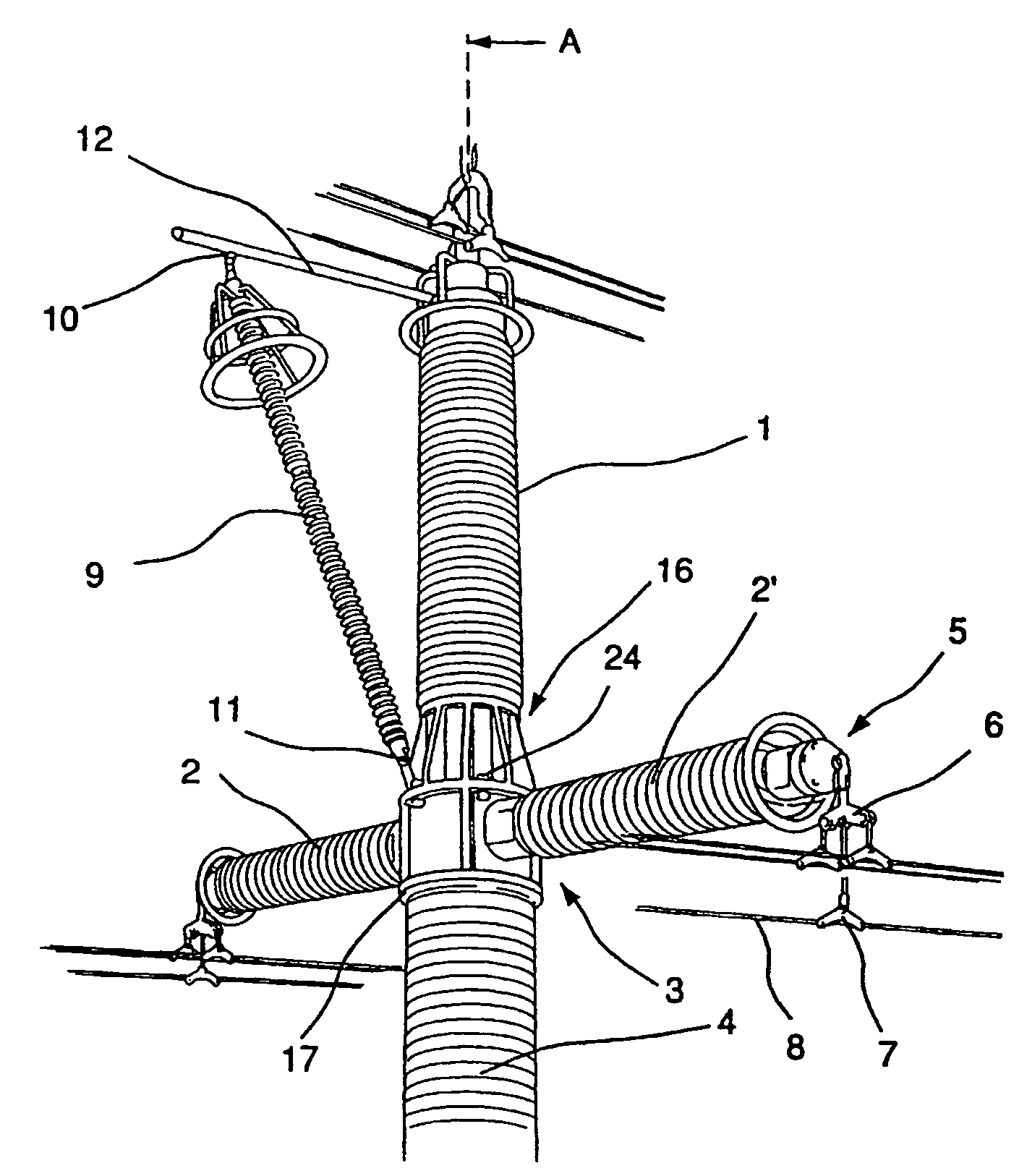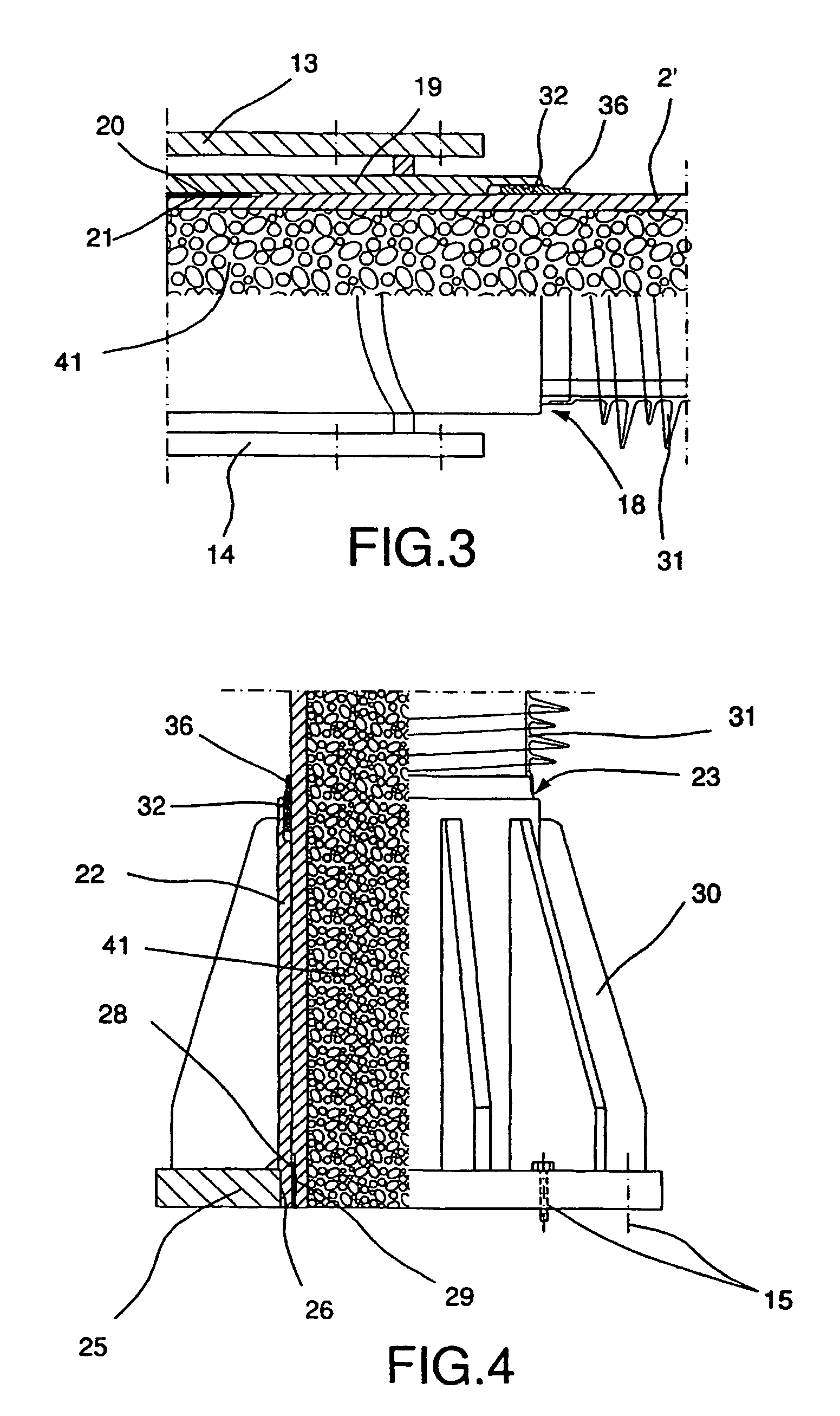Pole-top insulator
a technology of insulator and pole, which is applied in the direction of machine supports, other domestic objects, mechanical apparatus, etc., can solve the problems of increasing the erection or assembly time of each individual pole structure with associated insulators, and increasing the cost of erection and assembly
- Summary
- Abstract
- Description
- Claims
- Application Information
AI Technical Summary
Benefits of technology
Problems solved by technology
Method used
Image
Examples
Embodiment Construction
[0017]The present pole-top insulator in the embodiment shown in the drawings includes a first vertical tubular support arm 1 and a second and third designated 2 and 2′ respectively similar tubular supporting arms that arm oriented horizontally and located symmetrically on each side of a vertical plane of symmetry A and through the vertical tubular part. Each tubular and relatively continuous supporting arm 1, 2 and 2′ are made of some electrically insulating composite material, which can be made up of fiberglass reinforced epoxy. Suitable methods of manufacture include wet filament winding or injection moulding. Furthermore, the said tubular supporting arm can be monolithic or comprise several inter-joining tubular parts with a common centre axis. The tubular supporting arm then made is so designed that it exhibits both good insulating properties as well as such a high strength that it can be used as a self-supporting element with one or more phase leads or lines supported on its fr...
PUM
 Login to View More
Login to View More Abstract
Description
Claims
Application Information
 Login to View More
Login to View More - R&D Engineer
- R&D Manager
- IP Professional
- Industry Leading Data Capabilities
- Powerful AI technology
- Patent DNA Extraction
Browse by: Latest US Patents, China's latest patents, Technical Efficacy Thesaurus, Application Domain, Technology Topic, Popular Technical Reports.
© 2024 PatSnap. All rights reserved.Legal|Privacy policy|Modern Slavery Act Transparency Statement|Sitemap|About US| Contact US: help@patsnap.com










